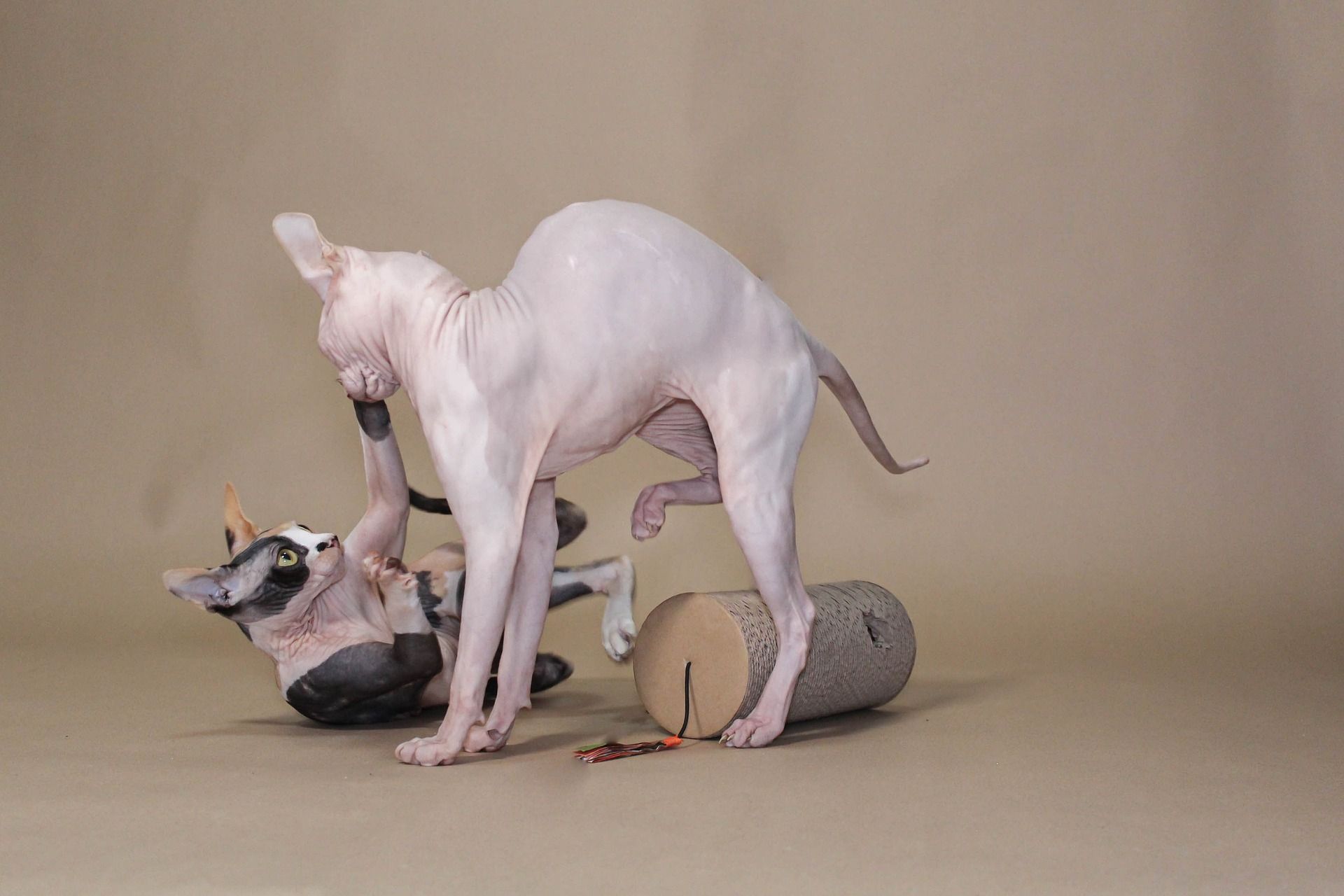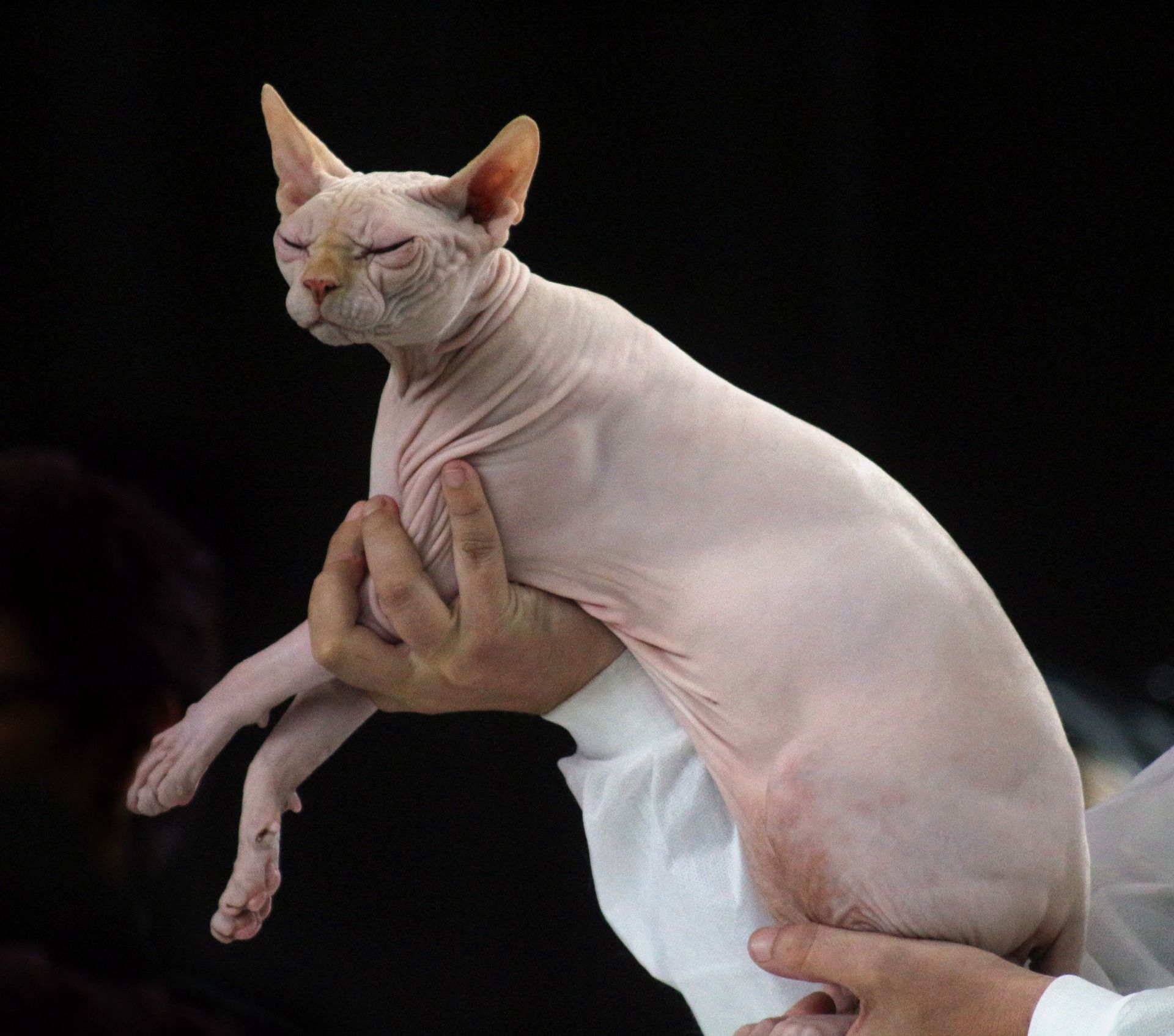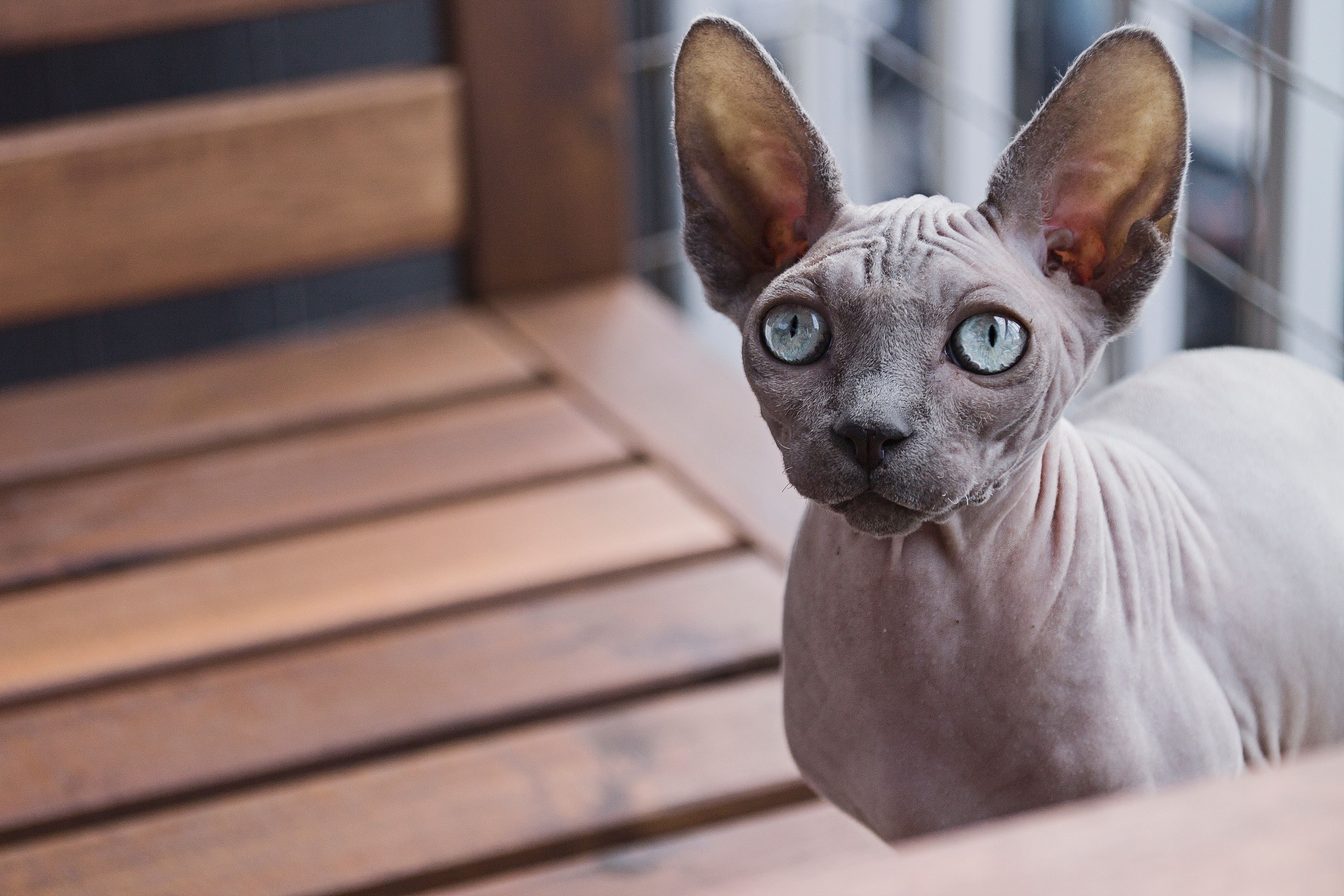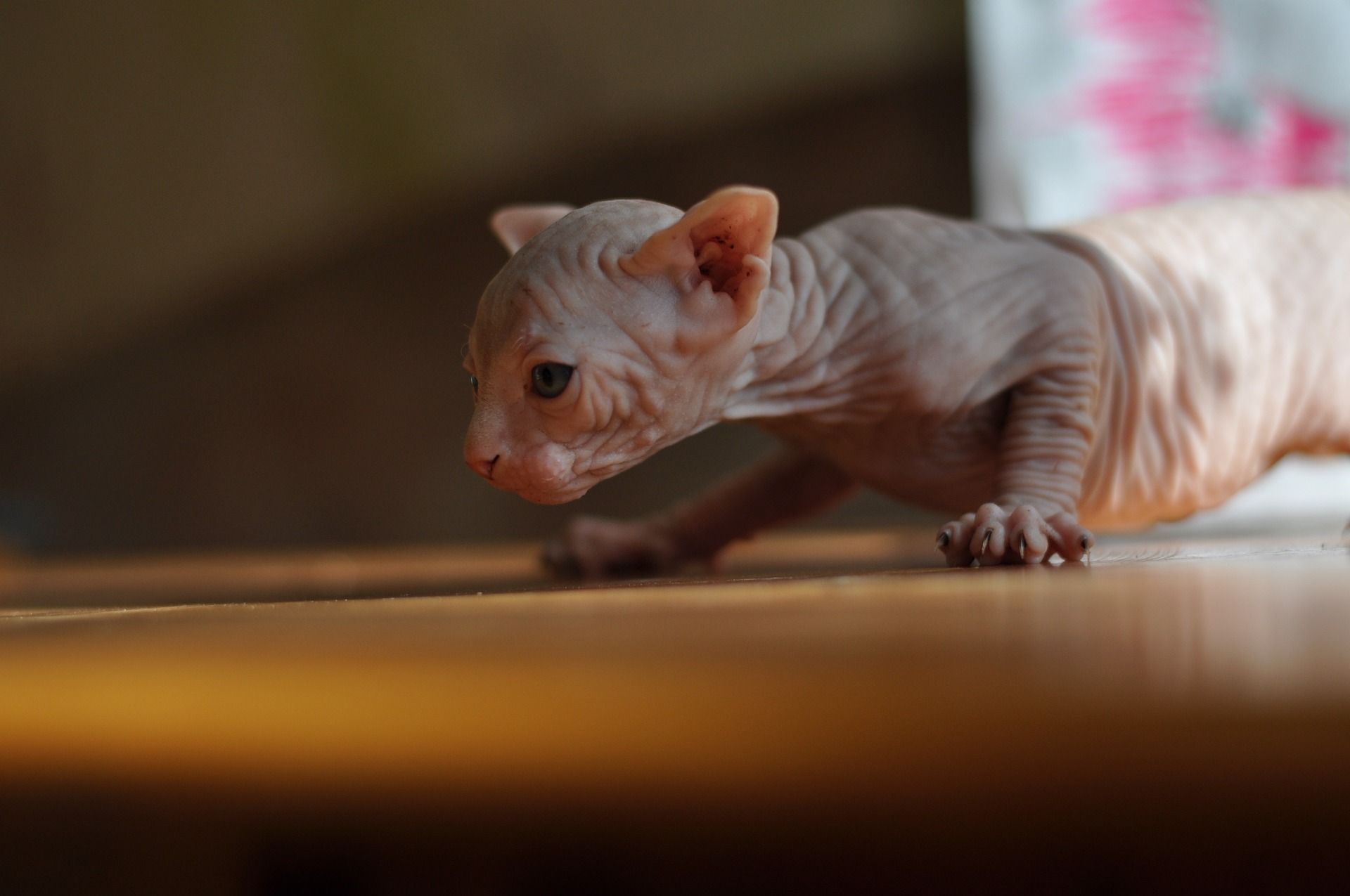Sphynx cats have a unique hairless appearance that is attractive especially to owners worried about allergies but are the hard to take care of?
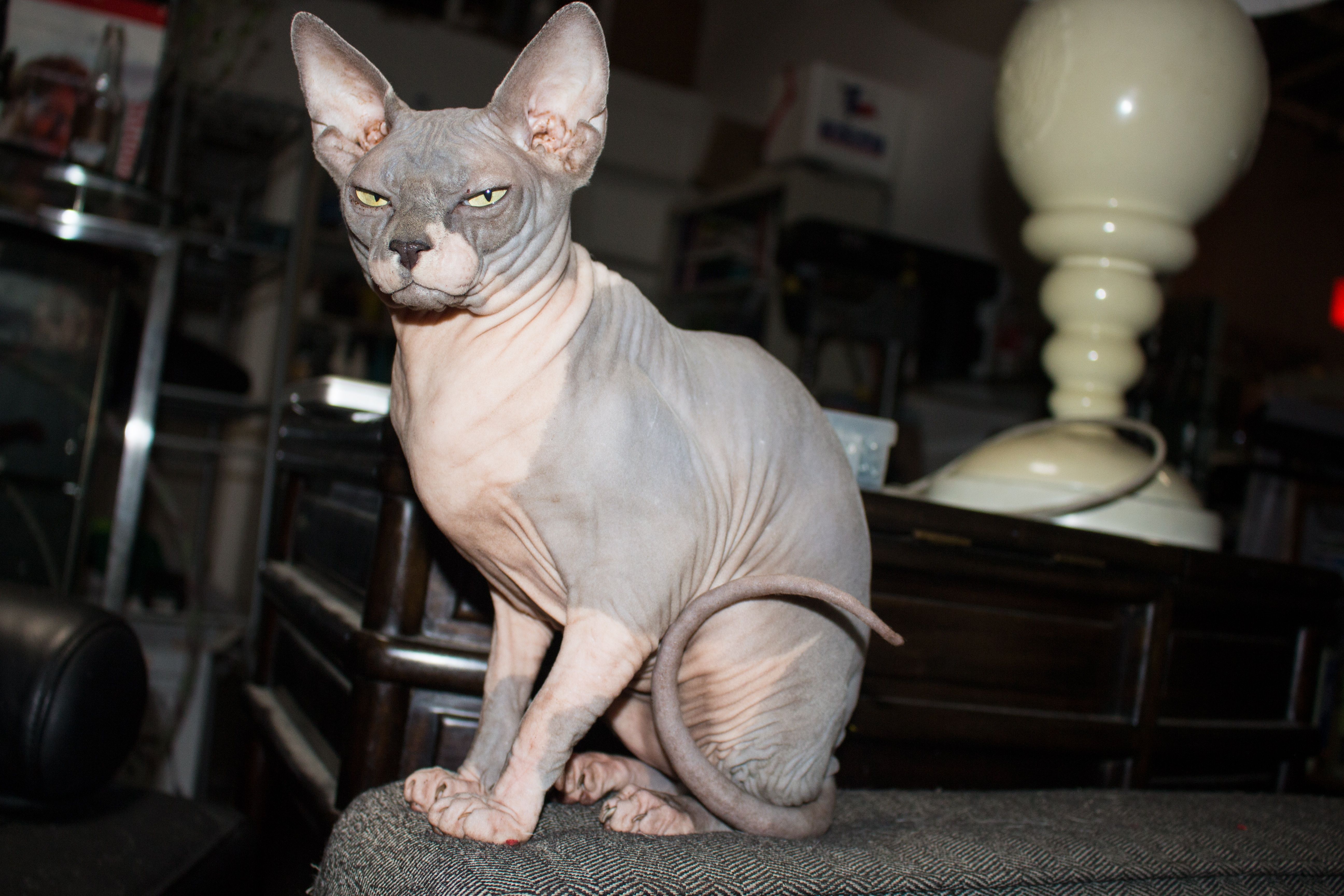
While Sphynx cats have unique care requirements due to their hairless nature, they are not necessarily hard to take care of with proper knowledge and attention. Key aspects of their care include regular bathing to manage oil buildup, ear cleaning to prevent wax accumulation, moisturizing to combat dry skin, and protection from sunburn due to their lack of fur. Additionally, owners must ensure proper temperature regulation, maintain a balanced diet, and schedule routine veterinary checkups to monitor their health.
Table of Contents
Is a Sphynx Cat High Maintenance? Are Sphynx Cats Hard to Take Care Of?
Sphynx cats are known for their unique hairless appearance, but their grooming needs can be different from those of other cats. While they may not require traditional brushing due to their lack of fur, they do have some specific care requirements that might make them seem high maintenance to some individuals.
Here are some aspects to consider when it comes to taking care of a Sphynx cat:
#1 — Bathing Requirements
Sphynx cats are unique in that they lack the protective layer of fur that most other cat breeds have. While the absence of fur makes them distinctive and often appealing to owners with allergies, it also means that they don’t have the same mechanisms for distributing and absorbing natural oils produced by their skin.
Regular bathing is necessary to maintain their skin health, as the oils that would typically be spread through fur can accumulate on their skin, leading to greasiness and potential skin issues.
Frequency of Bathing and Its Importance for Skin Health
Sphynx cats require more frequent baths compared to their furry counterparts. A general recommendation is to bathe them approximately once a week or every two weeks, depending on factors like their activity level and exposure to dirt.
Bathing serves several purposes for Sphynx cats:
- Oil removal: Regular bathing helps remove excess oils that can build up on their skin, preventing skin issues such as acne.
- Hygiene: Without fur, Sphynx cats are more prone to collecting debris and dirt on their skin. Bathing helps maintain overall cleanliness and hygiene.
- Temperature regulation: Bathing can assist in regulating their body temperature since they lack fur insulation.
Tips and Considerations for a Successful Bathing Routine
- Use cat-safe products: Ensure that the shampoo and other grooming products used are specifically formulated for cats to avoid skin irritation.
- Gentle handling: Handle the cat gently during the bath to minimize stress. Start by introducing them to water gradually to help them acclimate.
- Maintain a warm environment: Since Sphynx cats lack fur, they can get cold quickly. Keep the bathing environment warm, and consider using a blow dryer on a low, cool setting after the bath to prevent chilling.
- Check for skin abnormalities: While bathing, take the opportunity to inspect their skin for any abnormalities, such as redness, sores, or signs of infection. Early detection can help address potential health issues promptly.
- Positive reinforcement: Associate bath time with positive experiences by offering treats or gentle praise, creating a positive association with the grooming process.
- Regular schedule: Stick to a consistent bathing schedule to prevent oil buildup and maintain the cat’s skin health.
Regular bathing is a crucial aspect of their care that helps address the unique challenges posed by their hairless nature.
#2 — Ear Cleaning Necessities
Sphynx cats, being hairless, are prone to increased earwax buildup compared to cats with fur. The absence of fur in their ears makes it easier for wax to accumulate, potentially leading to blockages.
This heightened susceptibility to earwax buildup can contribute to ear health issues, making regular ear cleaning a crucial aspect of their care.
Importance of Regular Ear Cleaning for Preventing Infections
Regular ear cleaning is essential for preventing ear infections and maintaining the overall health of Sphynx cat ears. Excess earwax can create a favorable environment for the growth of bacteria and yeast, leading to infections.
By keeping their ears clean, owners can reduce the risk of infections, discomfort, and potential hearing problems for their Sphynx cats.
Techniques and Products Recommended for Safe Ear Cleaning
- Gentle cleaning technique: Use a gentle approach when cleaning Sphynx cat ears. Hold the cat securely and avoid causing stress. Gently lift the ear flap and clean visible wax using a soft cotton ball or pad.
- Ear cleaning solutions: Use veterinarian-recommended ear cleaning solutions specifically designed for cats. These solutions help soften and break down earwax, making it easier to clean. Avoid using cotton swabs, as they can push wax further into the ear canal and potentially cause damage.
- Regular inspection: Regularly inspect the ears for signs of redness, swelling, or discharge. If there are any abnormalities, consult a veterinarian promptly for further evaluation.
- Professional grooming: Some owners prefer to have professional groomers or veterinarians handle ear cleaning, especially if they are uncomfortable performing the task themselves. Professionals have the expertise to ensure a thorough and safe cleaning process.
- Frequency of ear cleaning: The frequency of ear cleaning may vary among Sphynx cats. Depending on the individual’s needs and earwax production, owners may need to clean their cat’s ears weekly or bi-weekly. Consulting with a veterinarian can help establish an appropriate schedule.
- Positive reinforcement: Use positive reinforcement during and after the ear cleaning process. Reward your Sphynx cat with treats or affection to create a positive association with the experience.
Owners should pay close attention to their cat’s ears, address any issues promptly, and establish a routine for ear care to prevent potential infections and discomfort.
#3 — Skin Care and Moisturizing
Sphynx cats, lacking the insulating layer of fur, have exposed skin that is more susceptible to dryness. The absence of fur means their skin is directly exposed to environmental elements, which can lead to dehydration and flakiness.
Moisturizing becomes essential to replenish the natural oils that would otherwise be distributed through fur, maintaining the skin’s health and preventing dryness.
Importance of Maintaining the Skin’s Health in the Absence of Fur
The skin is the largest organ of a cat’s body, playing a crucial role in protecting against external threats. For Sphynx cats, whose skin is exposed, maintaining its health is vital.
Moisturizing serves several purposes:
- Preventing dryness: Dry skin can lead to discomfort and itching. Moisturizing helps combat dryness, keeping the skin supple and hydrated.
- Reducing flakiness: Sphynx cats may be prone to flaky skin due to the lack of fur to retain moisture. Regular moisturizing can minimize flakiness and support a healthier skin texture.
- Promoting comfort: Well-moisturized skin contributes to a comfortable and contented cat. It helps prevent irritation and potential skin issues associated with dryness.
Types of Pet-Safe Moisturizers and Their Application
- Hypoallergenic cat lotions: Look for hypoallergenic lotions specifically formulated for cats. These lotions should be free from harmful chemicals and fragrances that could irritate the cat’s skin.
- Natural oils: Some owners use natural oils like coconut oil or vitamin E oil as moisturizers. These oils can be applied sparingly to the skin, but it’s essential to ensure that they are safe for ingestion in case the cat licks its skin.
- Specialized cat moisturizers: There are cat-specific moisturizers available that are designed to meet the unique needs of Sphynx cats. These products often have ingredients that promote skin health without causing irritation.
- Application technique: When applying moisturizer, use a small amount and gently massage it into the cat’s skin. Pay attention to areas that may be more prone to dryness, such as elbows, knees, and the belly. Be cautious around sensitive areas like the face and ears.
- Consultation with a veterinarian: Before introducing any new product, it’s advisable to consult with a veterinarian. They can provide guidance on suitable moisturizers and ensure they are safe for the cat’s skin.
Moisturizing should be a regular part of the grooming routine for Sphynx cats to promote overall skin health.
The chosen moisturizer should be cat-safe, hypoallergenic, and applied with care to ensure the well-being and comfort of the cat. Regular monitoring of the skin’s condition allows owners to adjust the moisturizing routine as needed.
#4 — Sun Protection for Sphynx Cats
Sphynx cats, lacking fur, have sensitive, exposed skin that is highly susceptible to sunburn. The absence of fur means there is no natural protection against harmful UV rays. Additionally, Sphynx cats have lighter-colored skin, which offers less protection against sun damage compared to darker pigmented skin. Sunburn in cats can cause discomfort, pain, and even increase the risk of developing skin cancer over time.
Strategies for Limiting Exposure to Direct Sunlight
- Indoor environment: Keep Sphynx cats indoors during peak sunlight hours, typically between 10 am and 4 pm when UV radiation is strongest. Creating a safe and comfortable indoor environment helps minimize their exposure to direct sunlight.
- Shaded areas: If your Sphynx cat enjoys spending time outdoors, provide ample shaded areas where they can seek refuge from the sun. This could include placing shaded structures or providing umbrellas in outdoor areas.
- Sun protective clothing: Consider using specially designed sun protective clothing for cats, which can help shield their skin from harmful UV rays when they need to be outdoors. These garments are lightweight and breathable, providing protection without causing discomfort.
- Window coverings: Install window coverings or blinds to block direct sunlight from entering your home. This prevents excessive exposure to UV rays, especially in areas where your cat likes to lounge.
- UV-blocking window films: Apply UV-blocking window films to windows to reduce the amount of UV radiation that enters your home. These films can help protect both your cat and other household members from sun damage.
Creating a Safe Indoor Environment and Managing Outdoor Time
- Enrichment activities: Provide plenty of indoor enrichment activities to keep your Sphynx cat stimulated and entertained. This includes interactive toys, scratching posts, and climbing structures to mimic the outdoor experience indoors.
- Supervised outdoor time: If you choose to allow your Sphynx cat outdoors, ensure that it is supervised at all times. This allows you to monitor their sun exposure and prevent overexposure to harmful UV rays.
- Use of sunscreen: If your Sphynx cat will be exposed to the sun, apply pet-safe sunscreen to areas of exposed skin, such as the ears, nose, and belly. Choose a sunscreen specifically formulated for cats and avoid products containing zinc oxide, which can be toxic if ingested.
Creating a safe indoor environment and managing outdoor time responsibly are essential for maintaining the health and well-being of these unique feline companions.
#5 — Temperature Regulation Challenges
Sphynx cats, lacking the insulating layer of fur that most other cat breeds possess, are more sensitive to temperature changes. Without fur to provide natural insulation, their bodies have a harder time regulating heat, making them susceptible to both cold and hot temperatures.
This sensitivity to temperature changes means that owners must take extra precautions to ensure their Sphynx cats remain comfortable and healthy in varying climates.
Tips for Ensuring Warmth in Cooler Weather and Preventing Overheating
- Provide warm sleeping areas: Offer cozy bedding options, such as blankets or heated beds, in areas where your Sphynx cat likes to rest. This provides insulation and warmth, especially during cooler weather.
- Adjust room temperature: Keep the indoor environment at a comfortable temperature, ideally between 75°F to 80°F (24°C to 27°C). During colder months, consider using a space heater or heating pad to maintain a consistent temperature in areas where your cat spends most of its time.
- Clothing options: Consider dressing your Sphynx cat in lightweight, breathable clothing designed for pets during colder weather. Sweaters or shirts can provide additional warmth without restricting movement.
- Monitor signs of cold: Watch for signs of discomfort or cold in your Sphynx cat, such as shivering, seeking out warm spots, or curling up into a tight ball. If you notice these signs, provide extra warmth and consider consulting with a veterinarian if the symptoms persist.
- Prevent overheating: During warmer weather, ensure your Sphynx cat has access to cool, shaded areas indoors. Use fans or air conditioning to help regulate the indoor temperature and prevent overheating. Additionally, provide fresh water at all times to help your cat stay hydrated.
Providing Comfort Through Blankets and Climate Control
- Soft blankets: Place soft blankets or towels in areas where your Sphynx cat likes to lounge or sleep. These provide comfort and warmth, especially during cooler weather.
- Climate control: Install a thermostat-controlled heating and cooling system to maintain a comfortable temperature indoors year-round. This allows you to adjust the temperature according to your Sphynx cat’s needs and the external climate conditions.
- Heated cat beds: Consider investing in a heated cat bed, which provides a consistent source of warmth for your Sphynx cat during colder weather. These beds are designed to safely maintain a comfortable temperature for your pet.
This way owners can help Sphynx cats navigate temperature changes more comfortably and maintain their overall health and well-being.
#6 — Nutritional Considerations
A well-balanced and nutritious diet is essential for the health and well-being of Sphynx cats, as it provides the necessary nutrients to support their unique physiology and meet their specific dietary requirements.
Proper nutrition plays a crucial role in various aspects of their health, including:
- Skin and coat health: Despite lacking fur, Sphynx cats still require nutrients like omega-3 and omega-6 fatty acids to maintain healthy skin and coat. A diet rich in these essential fatty acids can help prevent dryness, flakiness, and skin issues.
- Muscle development and maintenance: Sphynx cats are known for their muscular build, and they require adequate protein intake to support muscle development and maintenance. High-quality animal-based proteins are essential for meeting their protein needs.
- Energy levels and activity: Sphynx cats tend to be active and playful, requiring sufficient energy from their diet to support their activity levels. A balanced diet that provides the right balance of carbohydrates, proteins, and fats ensures they have the energy they need for daily activities.
- Immune system function: Proper nutrition is crucial for supporting a strong immune system, helping Sphynx cats defend against infections and illnesses. Essential vitamins, minerals, and antioxidants play a vital role in immune function and overall health.
Consulting with a Veterinarian to Determine Dietary Needs
It’s important for Sphynx cat owners to consult with a veterinarian to determine the specific dietary needs of their cat.
A veterinarian can provide personalized recommendations based on factors such as the cat’s age, weight, activity level, and any underlying health conditions. They can also offer guidance on choosing the right type of diet, whether it’s commercial cat food, homemade meals, or a combination of both.
Veterinarians may also recommend specialized diets tailored to address specific health concerns, such as skin allergies, digestive issues, or weight management. Regular check-ups and discussions with the veterinarian allow owners to adjust their cat’s diet as needed to ensure optimal health and well-being.
Impact of Nutrition on Overall Health and Well-Being
Nutrition plays a significant role in shaping the overall health and well-being of Sphynx cats.
A balanced diet that meets their nutritional needs helps support:
- Healthy skin and coat
- Strong muscles and bones
- Proper immune function
- Digestive health
- Energy levels and vitality
On the other hand, a poor diet lacking essential nutrients can lead to various health problems, including nutritional deficiencies, obesity, digestive issues, and compromised immune function.
By prioritizing proper nutrition and working closely with a veterinarian, Sphynx cat owners can ensure their feline companions receive the nutrients they need to thrive and lead healthy, happy lives.
#7 — Routine Veterinary Checkups
Regular veterinary checkups are essential for the health and well-being of Sphynx cats. These checkups allow veterinarians to monitor the cat’s overall health, detect any potential health issues early on, and provide necessary preventive care.
Sphynx cats, like all breeds, benefit from routine examinations to ensure they are in optimal health and to address any concerns that may arise.
Identifying and Addressing Health Issues Early On
Regular veterinary checkups enable early detection and intervention for various health issues that Sphynx cats may be prone to.
These can include:
- Skin conditions: Sphynx cats are susceptible to skin issues due to their lack of fur. Regular checkups allow veterinarians to monitor the skin’s condition, detect any abnormalities, and provide appropriate treatment for conditions such as dermatitis, infections, or sunburn.
- Ear health: Sphynx cats may experience increased earwax buildup and are prone to ear infections. Veterinary checkups include ear examinations to identify any signs of infection or inflammation and recommend appropriate treatment.
- Dental health: Dental problems, such as periodontal disease, can affect Sphynx cats like any other breed. Veterinarians can assess the cat’s dental health during checkups, recommend dental care practices, and perform professional cleanings if necessary.
- Nutritional needs: Veterinarians can provide guidance on Sphynx cats’ specific nutritional needs, recommend appropriate diets, and monitor their weight and body condition to ensure they are receiving adequate nutrition.
Proactive Steps Owners Can Take to Prioritize Their Cat’s Health
- Schedule regular checkups: Schedule routine veterinary checkups for your Sphynx cat, ideally at least once a year or as recommended by your veterinarian. These appointments allow for comprehensive examinations and preventive care.
- Monitor changes in behavior or appearance: Pay attention to any changes in your Sphynx cat’s behavior, appetite, or appearance, as these can be signs of underlying health issues. Promptly report any concerns to your veterinarian for evaluation.
- Maintain a healthy lifestyle: Provide a balanced diet, regular exercise, and a stimulating environment for your Sphynx cat to promote overall health and well-being.
- Practice good grooming habits: Implement a regular grooming routine, including bathing, ear cleaning, and dental care, to keep your Sphynx cat clean and healthy.
- Stay up-to-date on vaccinations and preventive care: Ensure your Sphynx cat receives recommended vaccinations and preventive treatments, such as flea and tick prevention, to protect against common diseases and parasites.
By prioritizing regular veterinary checkups and proactive care, Sphynx cat owners can help maintain their cat’s health, detect and address any health issues early on, and ensure their feline companion enjoys a happy and healthy life.
Wrapping Up
In summary, while Sphynx cats do not require traditional brushing due to their lack of fur, they do have specific needs that may be considered high maintenance by some individuals.
The key is consistent and attentive care, including regular bathing, ear cleaning, skin moisturizing, sun protection, temperature regulation, proper nutrition, and routine veterinary checkups. Potential owners should carefully consider these factors and be willing to invest the time and effort required to meet the unique needs of Sphynx cats.
While Sphynx cats may require more attention in certain aspects of grooming, some owners find them to be affectionate, social, and well worth the extra care.
If you’re considering adopting a Sphynx cat, it’s essential to be aware of their specific needs and be committed to providing the necessary care to keep them happy and healthy.
